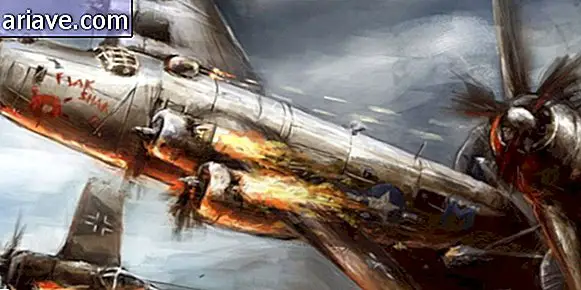Do you know which is the richest family in the world?
Forget for a moment all those lists of the world's greatest billionaires. If you had to guess which is the richest family on the planet, what would you guess? Would you kick for some European royal family, like the British, for example? Or maybe Bill Gates or Elon Musk's family? We are sorry to say that these are not any of these options, and you have probably never heard of these rich people.
According to Matt Blitz of Today I Found Out, the richest family in the world is Rothchild, which we even briefly talk about in a story here from Mega Curious. Descendants of Mayer Amschel Rothschild, it is estimated that family members now total more than $ 1 trillion together, making it the largest private fortune in history.
The building of a fortune

According to Matt, the rise of the family began with Mayer Amschel Rothschild, who was born in the mid-18th century in a Jewish ghetto in Frankfurt, Germany, and took over the business of the young family after his father's death. The Rothschilds engaged in foreign exchange operations, and this business evidently required Mayer to understand a great deal about different types of money, currencies, and values.
Over time, Mayer became a rare coin expert and, in addition to family income, began negotiating with collectors. For an avid collector of the time was the Crown Prince of Hesse - a German territory - who later became William I of Hesse-Cassel, the region's first prince-elector, meaning that he became governor of the territory under the command of the Holy Roman Emperor.

Basically, William was a powerful man, and as business with Mayer went well, he decided to hire the money changer as " Hoffaktor ." As such, Mayer became responsible for managing the finances, tax collections, and loan-related operations of other European royal houses - and a considerable sum of money was paid for his activities.
According to Matt, Mayer's influence continued to increase, and during the French Revolution, which lasted from 1789 to 1799, he dealt with virtually every financial aspect related to the war. Like? During times of conflict, all governments need money to feed and arm soldiers. And at the time Mayer was there to offer loans, negotiate rates, and make offers.
Family money

Despite the turbulence in Europe, Mayer soon became one of Frankfurt's richest men, and he made sure that his five sons, all devoted to their father's business, strengthened the base of his empire. So he sent young people to serve in strategic cities such as Naples, Paris, Vienna, and London, and ensured that they all became indispensable to the governments of these places - while increasing family fortunes.
In addition, Mayer also managed to keep the money flowing among family members, arranging the marriages of their children, most of them with cousins. The moneychanger died in 1812, and in addition to the "fights" not to share the fortune with others, the wars that were taking place in Europe at the time further fattened the Rothschild's accounts, as well as further increased their influence.
According to Matt, by the turn of the 20th century, the Rothschilds had already established themselves with the most influential and wealthy bankers in the world. And it was Lord Rothschild - also known as 1st Baron Rothschild - who began lending to countries outside Europe, especially the United States.
Expanding Riches
In addition to dominating the world of finance, over the years the Rothschilds have also become great collectors of art - and spectacular properties. Some of them, located in France, have been made into world famous wineries, and the wines produced today are, of course, among the most expensive on the planet. Check out some of the following mansions:







With respect to art collections, according to Matt, the Rothschilds have amassed an incredible array of sculptures, paintings, furniture, ceramics and even priceless scientific equipment. Just as a curiosity, when Nazi troops invaded Austria, the Rothschild residences were occupied, and all the artworks looted because Hitler intended to create a museum in Linz, and the pieces would be exhibited there.
Thus, until the Führer could continue the museum project, the works taken by the Rothschilds were hidden in a ski resort in the Alps. The collection was discovered by US soldiers when the war ended, but the pieces were only returned by the Austrian government - which kept almost everything exposed by various museums in the country - to the owners in 1999.
More curio $ age $:

- The most controversial - and rotten rich - Rothschild was undoubtedly Nathan, one of Mayer's sons, whom he sent to London. When the Napoleonic Wars began, it was Nathan who alone helped finance the attacks of the Duke of Wellington, the famous British general who helped defeat Napoleon at the Battle of Waterloo;
- Nathan also made extensive use of the Rothschild's network of agents, informants, and messengers - including carrier pigeons - to keep abreast of all that was going on financially during the war. And he took that advantage, for example, to spread the rumor that the British had lost the war, even though they knew it was a lie, just to manipulate stock market values to make a lot of money;

- But Nathan had a good heart too! A confessed abolitionist, he worked hard to eradicate the slave trade in the United Kingdom, fought for the abolition to be enacted, and helped finance the purchase of British plantations - now worth $ 8.25 billion - that employed slaves;
- And Lionel, one of Nathan's seven sons - who also remained in the family business - was the first Jew to be accepted into the British House of Commons, and he helped fund efforts to help the victims of the Great Famine in Ireland. ;

- Skipping a few decades into the future, after the Austrian government returned the Rothschild artwork that had been stolen by the Nazis during the war, the family decided to donate and sell almost the entire collection;
- The family also donated several of its magnificent properties, such as Waddesdon Manor and Ascott House, located in England, and Schloss Rothschild, located in Austria - which you will find below:



- The Rothschild family still exists today, and remains outrageously rich. However, members try to lead a discreet life, and instead of devoting themselves exclusively to the financial world, the Rothschilds are now more focused on winemaking, real estate, asset management, working with charitable organizations and social activism.











